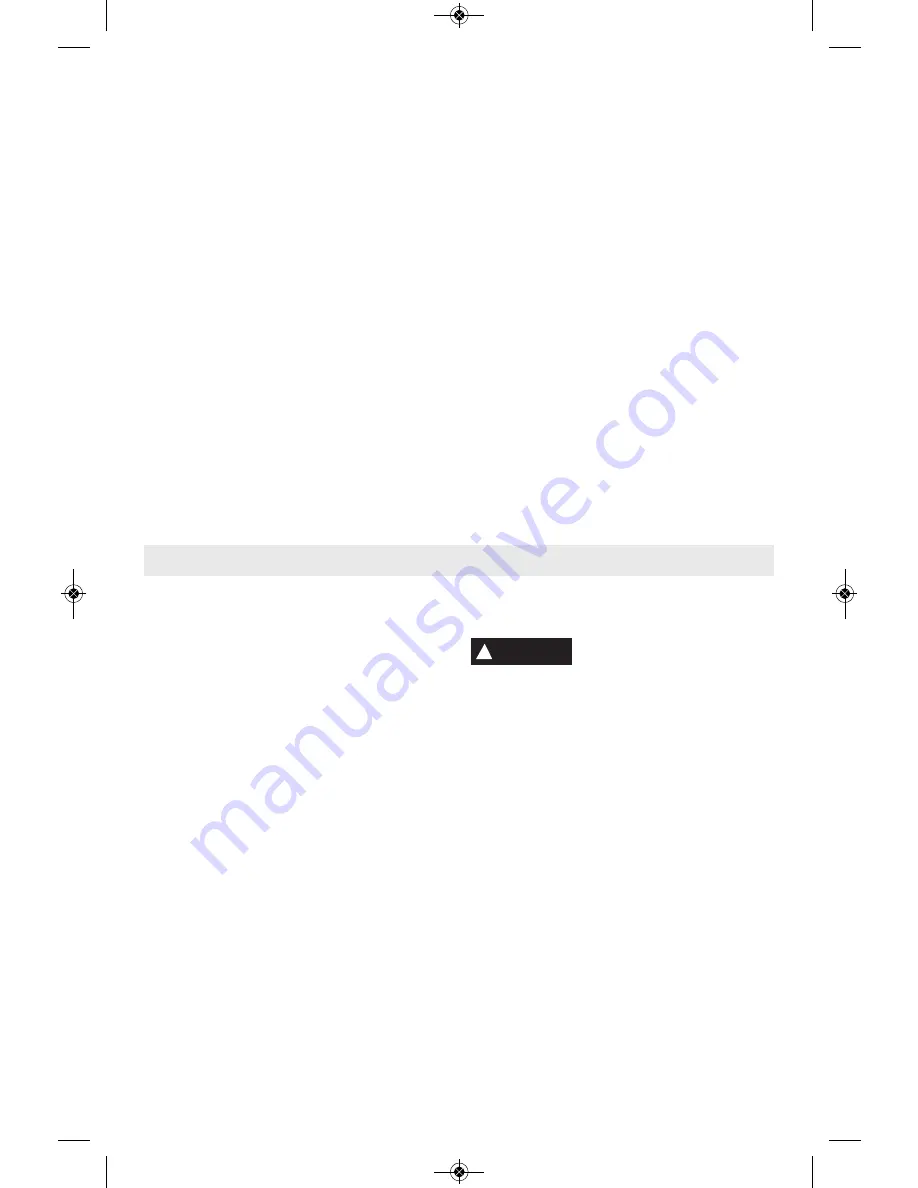
GFCI and personal protection devices like
electrician’s rubber gloves and footwear will
further enhance your personal safety.
Do not use AC only rated tools with a DC
power supply.
While the tool may appear to
work, the electrical components of the AC
rated tool are likely to fail and create a hazard
to the operator.
Keep handles dry, clean and free from oil
and grease.
Slippery hands cannot safely
control the power tool.
Develop a periodic maintenance schedule
for your tool. When cleaning a tool be
careful not to disassemble any portion of
the tool since internal wires may be
misplaced or pinched or safety guard return
springs may be improperly mounted.
Certain cleaning agents such as gasoline,
carbon tetrachloride, ammonia, etc. may
damage plastic parts.
Ensure the switch is in the off position
before inserting battery pack.
Inserting the
battery pack into power tools that have the
switch on invites accidents.
Some dust created by power
sanding, sawing, grinding,
drilling, and other construction activities
contains chemicals known to cause cancer,
birth defects or other reproductive harm.
Some examples of these chemicals are:
• Lead from lead-based paints,
• Crystalline silica from bricks and cement and
other masonry products, and
• Arsenic and chromium from chemically-
treated lumber.
Your risk from these exposures varies,
depending on how often you do this type of
work. To reduce your exposure to these
chemicals: work in a well ventilated area, and
work with approved safety equipment, such as
those dust masks that are specially designed
to filter out microscopic particles.
-4-
periods.
Vibration caused by the tool may be
harmful to the hands and arms.
Before scraping, check workpiece for nails.
If there are nails, either remove them or set
them well below intended finished surface.
Striking a nail with accessory edge could
cause the tool to jump.
Do not wet sand with this tool.
Liquids
entering the motor housing is an electrical
shock hazard.
Never work in area which is soaked with a
liquid, such as a solvent or water, or
dampened such as newly applied
wallpaper.
There is an electrical shock hazard
when working in such conditions with a power
tool and heating of the liquid caused by
scraping action may cause harmful vapors to
be emitted from workpiece.
Always wear eye protection and a dust
mask for dusty applications and when
sanding overhead.
Sanding particles can be
absorbed by your eyes and inhaled easily
and may cause health complications.
Use special precautions when sanding
chemically pressure treated lumber, paint
that may be lead based, or any other
materials that may contain carcinogens.
A
suitable breathing respirator and protective
clothing must be worn by all persons entering
the work area. Work area should be sealed by
plastic sheeting and persons not protected
should be kept out until work area is thoroughly
cleaned.
Do not use sandpaper intended for larger
sanding pads.
Larger sandpaper will extend
beyond the sanding pad causing snagging,
tearing of the paper or kick-back. Extra paper
extending beyond the sanding pad can also
cause serious lacerations.
Additional Safety Warnings
!
WARNING
BM 2610028025 05-13_BM 2610028025 05-13 5/20/13 2:39 PM Page 4





































